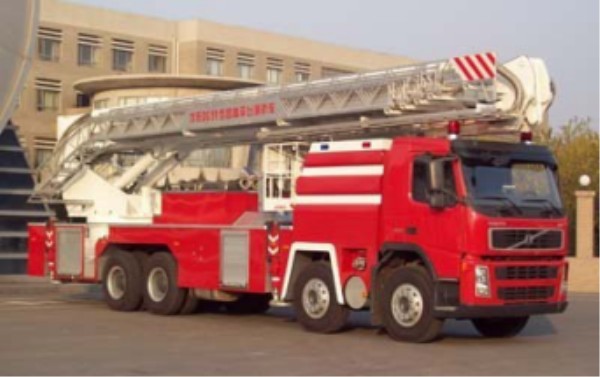The prospects for the development of fire-climbing vehicles
In recent years, reports of people or items being rescued by fire-fighting ascending vehicles have appeared more and more frequently in major media, such as the rescue of people trapped in a high-rise, or the destruction of cells that disturbed residents. For fire trucks , everyone is familiar with it. First of all, let's take a look at what exactly is a fire escape car ? The fire-fighting ascendant is a type of fire-fighting vehicle that aims to rescue the disaster. There is a platform above the fire-climbing truck that is designed for firefighters to rescue people or items. When will you use a fire escape? It is required for fire extinguishing above the tenth floor or for the rescue of people on the third floor or above. From this we can see that the prospects for the development of fire-fighting vehicles are optimistic. The reason is that with the continuous development of the social economy, the urban land is tense, the construction technology is constantly improving, the floors of buildings are getting higher and higher, and high-rise buildings can be seen everywhere in the city. The highest floor of the former residential area is only nine floors, and now the residential building has as many as thirty to forty floors. In the event of an accident on a high floor, the role of the old fire trucks is minimal. If a fire is extinguished, an ordinary fire engine can only reach a maximum height of 50 meters, which is approximately the ninth floor, which is the highest floor of the old building. To save people, ordinary fire trucks can only rescue people below the third floor. At present, such a high level of fire engines is far from meeting the requirements for disaster relief and rescue. This requires the participation of firefighters. In order to adapt to the development of modern buildings, fire-fighting vehicles have emerged and have been continuously improved. With the development of society, the number of fire-fighting vehicles will increase, and the heights that can be achieved will also increase. The operating system will be more and more perfect, and it will be able to adapt to the development of society and meet the disaster-relief requirements of various buildings. Therefore, it can be said that the prospects for the development of fire-fighting vehicles are good. It plays an indispensable role in rescue and disaster relief. For the development of the fire truck, let's wait and see.
Petrochemical products refer to finished
products of the petrochemical industry that use oil or natural gas as raw
materials to manufacture chemicals. Petroleum through a variety of processing
processes, can produce gasoline, kerosene, diesel, lubricating oil, paraffin,
asphalt, petroleum coke, liquefied gas and other petroleum products, and can
provide plastics, synthetic fibers, synthetic rubber, synthetic detergents,
fertilizers, pesticides and other chemical products to provide a wealth of raw
materials.
Petrochemical products are obtained by further chemical processing of raw oils provided by the refining process. The first step in the production of petrochemical products is to crack the raw oil and gas (such as propane, gasoline, diesel, etc.) to generate basic chemical raw materials represented by ethylene, propylene, butadiene, benzene, toluene, and xylene. The second step is to produce a variety of organic chemical raw materials (about 200 kinds) and synthetic materials (synthetic resins, synthetic fibers, synthetic rubber), as well as fine chemical products, based on basic chemical raw materials.
Petrochemical Industry,Petrochemical,Petrochemicals,Petrochemical Products WUHAN RUISUNNY CHEMICAL CO. LTD , https://www.ruisunny-chem.com
Fine chemical products are also known as specialty chemicals. Including surfactants, pesticides, dyes (including pigments), pharmaceuticals, additives, catalysts. In addition, there are coatings, adhesives, photosensitive materials, magnetic recording materials, chemical reagents, fragrances, food and feed additives, oilfield chemicals, water treatment agents, oil additives, etc.